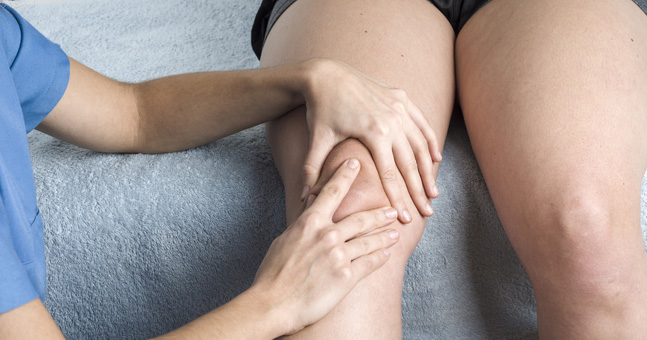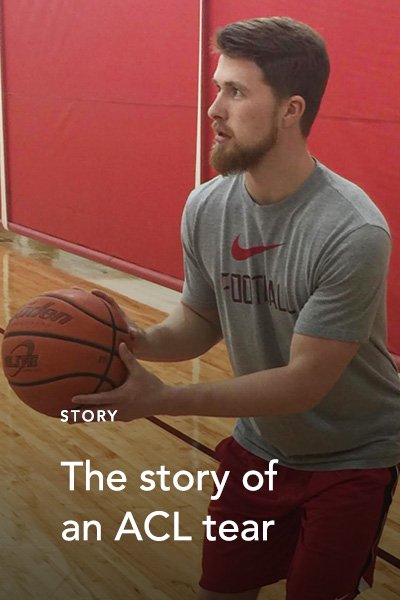Patellar and Quadriceps Tendon Repair
The quadriceps muscles are large muscles that extend along the front of the thigh and play a critical role in the way your knee and leg move.
The muscles are attached to the kneecap (or patella) by the quadriceps tendon, and then to the tibia by the patellar tendon (or ligament). Together, the muscle and tendons work to straighten your leg in addition to bearing weight when walking, running and performing other activities.
Tears in the quadriceps tendon or patellar tendon have a direct impact on knee function as well as significant consequences for your ability to move normally. While small partial tears in knee tendons may respond to conservative, treatments like immobilization and physical therapy, complete tears require surgery to reattach the tendon to the bone.
What causes patellar and quadriceps tendon tears?
Complete tears occur more commonly in adults, and in most cases, they’re caused by injuries sustained during running, jumping and landing, or from falls. Many tears occur when a heavy load is placed on the muscle while the knee is partially bent, like an awkward landing after a jump. Direct force to the front of the knee and deep lacerations can also cause knee tendon tears.
Quadriceps and patellar tendon tears are more common among people with weak or damaged tendons, including those with quadriceps tendonitis (inflammation around the tendon) and people with some chronic diseases. Long-term or regular use of some medications like corticosteroids and certain types of antibiotics has also been linked with a higher risk for tendon weakness and tears.
How can I tell if I’ve torn a tendon in my knee?
Tendon tears cause severe pain when they occur, and a complete tear will prevent you from being able to completely straighten your leg. At the time of injury, you may have a “popping” or “snapping” sensation as the tendon is ripped, followed by extreme pain and swelling. Kneecap dislocation and bruising are also common.
During your examination, Dr. Van Thiel will ask you to flex and extend your leg and he’ll gently palpate (feel) the area to isolate the source of symptoms. X-rays and other diagnostic imaging tests can provide in-depth information about the type and extent of your injury, as well as determining if other structures are damaged.
How is a torn knee tendon treated?
When a complete tendon tear occurs, you’ll need surgery to reattach the tendon to the kneecap. During surgery, the tendon will be reattached using sutures or special anchors. Additional sutures may be placed in or around the kneecap to help hold it in place while the tendon heals. Ideally, surgery should be completed soon after the injury, before scar tissue forms or the tendon tightens and shrinks. If the tendon has shortened, Dr. Van Thiel may need to use a graft to lengthen it so it can be reattached to the kneecap.
What will my recovery be like?
 After your knee surgery, you’ll need to wear a brace and restrict your weight-bearing activities during the initial stages to enable the tendon to heal. You’ll also have physical therapy to help strengthen your leg and restore normal mobility and function for your knee joint. Your rehabilitation program will be tailored to your needs and goals. In most cases, you can expect healing to take from four to six months, with a complete return to activities in about a year. Read patient stories about related injuries and the recovery process.
After your knee surgery, you’ll need to wear a brace and restrict your weight-bearing activities during the initial stages to enable the tendon to heal. You’ll also have physical therapy to help strengthen your leg and restore normal mobility and function for your knee joint. Your rehabilitation program will be tailored to your needs and goals. In most cases, you can expect healing to take from four to six months, with a complete return to activities in about a year. Read patient stories about related injuries and the recovery process.
Learn more about state-of-the-art knee pain treatment.
Dr. Geoffrey Van Thiel is a top-ranked orthopedic surgeon and sports medicine specialist helping patients in the greater Chicago area relieve knee pain, restore normal joint function and get back to the active lives they love.
To find out what’s causing your knee pain and to learn more about possible treatments, call OrthoIllinois at 815-398-9491 and schedule a consultation with Dr. Van Thiel today.




